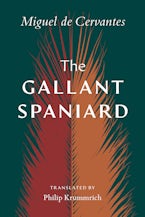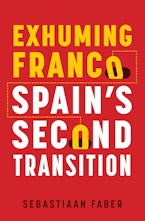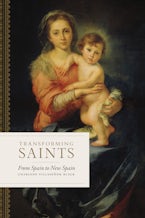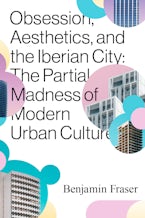- Home
- To Embody the Marvelous
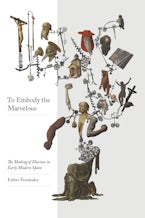
To Embody the Marvelous
The Making of Illusions in Early Modern Spain
Winner of the Vern Williamsen Comedia Book Prize, Association for Hispanic Classical Theater, 2023
Winner of the Nancy Staub Award, UNIMA-USA (Union Internationale de la Marionnette), 2023
In its exploration of puppetry and animation as the performative media of choice for mastering the art of illusion, To Embody the Marvelous engages with early modern notions of wonder in religious, artistic, and social contexts.
From jointed, wood-carved figures of Christ, saintly marionettes that performed hagiographical dramas, experimental puppets and automata in Cervantes' Don Quixote, and the mechanical sets around which playwright Calderón de la Barca devised secular magic shows to deconstruct superstitions, these historical and fictional artifacts reenvisioned religious, artistic, and social notions that led early modern society to critically wrestle with enchantment and disenchantment.
The use of animated performance objects in Spanish theatrical contexts during the sixteenth and seventeenth centuries became one of the most effective pedagogical means to engage with civil society. Regardless of social strata, readers and spectators alike were caught up in a paradigm shift wherein belief systems were increasingly governed by reason—even though the discursive primacy of supernatural doxa and Christian wonder remained firmly entrenched. Thanks to their potential for motion, religious and profane puppets, automata, and mechanical stage props deployed a rationalized sense of wonder that illustrates the relationship between faith and reason, reevaluates the boundaries of fiction in art and entertainment cultures, acknowledges the rise of science and technology, and questions normative authority.
Winner of the Nancy Staub Award, UNIMA-USA (Union Internationale de la Marionnette), 2023
In its exploration of puppetry and animation as the performative media of choice for mastering the art of illusion, To Embody the Marvelous engages with early modern notions of wonder in religious, artistic, and social contexts.
From jointed, wood-carved figures of Christ, saintly marionettes that performed hagiographical dramas, experimental puppets and automata in Cervantes' Don Quixote, and the mechanical sets around which playwright Calderón de la Barca devised secular magic shows to deconstruct superstitions, these historical and fictional artifacts reenvisioned religious, artistic, and social notions that led early modern society to critically wrestle with enchantment and disenchantment.
The use of animated performance objects in Spanish theatrical contexts during the sixteenth and seventeenth centuries became one of the most effective pedagogical means to engage with civil society. Regardless of social strata, readers and spectators alike were caught up in a paradigm shift wherein belief systems were increasingly governed by reason—even though the discursive primacy of supernatural doxa and Christian wonder remained firmly entrenched. Thanks to their potential for motion, religious and profane puppets, automata, and mechanical stage props deployed a rationalized sense of wonder that illustrates the relationship between faith and reason, reevaluates the boundaries of fiction in art and entertainment cultures, acknowledges the rise of science and technology, and questions normative authority.
Introduction: Stages of Animation
Chapter One: Mechanics of Reductionism
Chapter Two: Matters of God
Chapter Three: Articulating Saintliness
Chapter Four: Unruly Puppets
Chapter Five: Technologies of Wonder
Chapter Six: Trapdoors to Desengaño
Conclusion: When Statues Move
Notes
Bibliography
Index
Chapter One: Mechanics of Reductionism
Chapter Two: Matters of God
Chapter Three: Articulating Saintliness
Chapter Four: Unruly Puppets
Chapter Five: Technologies of Wonder
Chapter Six: Trapdoors to Desengaño
Conclusion: When Statues Move
Notes
Bibliography
Index
Esther Fernández is an associate professor in the Department of Modern and Classical Literatures and Cultures at Rice University.
"There is an extraordinary interdisciplinarity within the work. The complexity of the detail of technical, philosophical, and metaphorical aspects described is very strong. . . . I have never read anything quite like this before."
—Cariad Astles, coeditor of Women and Puppetry: Critical and Historical Investigations



